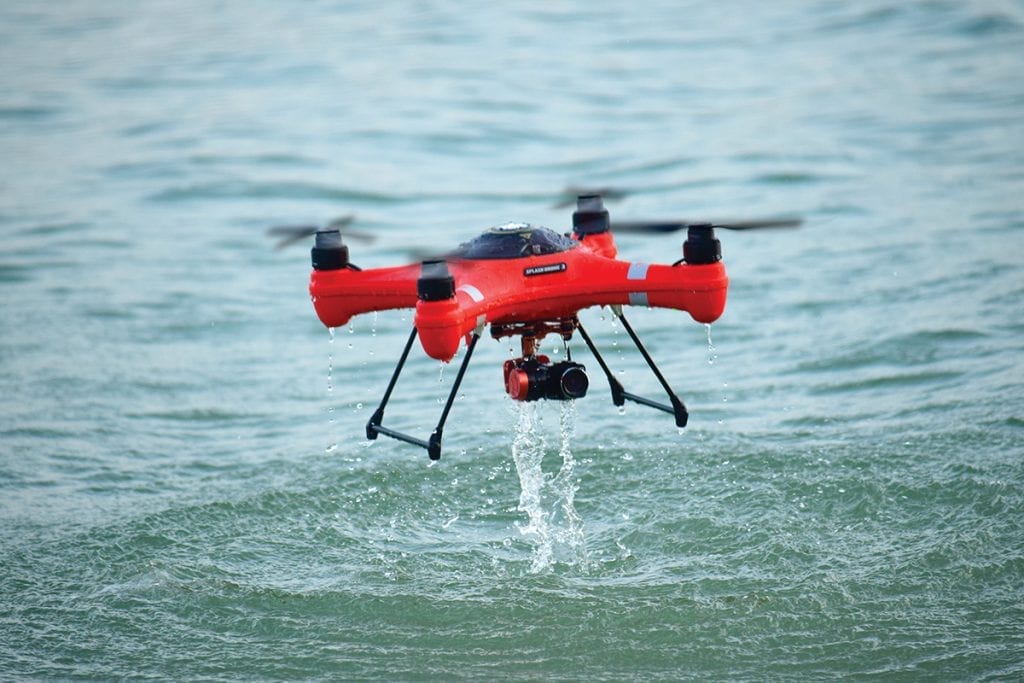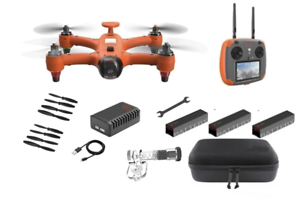
We'll be covering the basics of a drone-fishing rig in this article. We will also discuss what to look out for when selecting your drone, battery life and payload. We'll then discuss ways to get the best out of your drone. Read on for some tips and tricks. You'll soon own the drone you desire! Let's get !... started and maybe even catch some fish!
Basic drone fishing rig
A good set of hooks is the most important thing when you want to begin drone fishing. The fishing line should be doubled and should be mono or braid. To attach a Cat's Paw Loop or Uni Knot to the line, you should tie it. You will also need a sinker (2-8 oz) and hooks (to attach to each section of the backbone). The final step is to attach the lead loop and end loop of your drone using a snap swivel.
You can make a fishing drone in many different ways. A basic one involves attaching a hook to the landing gear of the drone and spinning it until the line releases. A dropper to keep your fishing line under the drone is another option. A dropper allows you to keep the main line below the drone without getting tangled with the propellers. The fishing drones can also be equipped with accessories, such as a battery pack and a dock.
You will need additional equipment once you have bought the basic drone fishing gear. You will need a long fishing line (about 700 meters), as well as a bait-dropping device. These are optional accessories, but they can make your drone fishing adventure more enjoyable. A drone will give you a clearer look of your surroundings so you can spot fish better.

Payload for drone fishing rig
Be aware of safety precautions if you want to catch fish by drone. It is not a good idea to fly your drone in heavy winds or rain. Here are some steps:
First, ensure that the drone has enough weight to support its weight. If you load it with heavy lures and braided line, it will not be stable. If you are fishing near the seaside, wind can blow the drone off course. You should also check the local laws and regulations as some might not allow drone fishing. You need to ensure that your drone is strong enough to carry you when you go fishing.
The next step is to determine which accessories you'll need to mount on your drone. To reduce the weight distribution issues, it is a good idea to use a rigging system with a central attachment point. Motor struts or landing gear and the legs of the drone are all good options for attaching. Avoid attaching payloads to your camera or gimbal, as they can be damaged. The easiest solution is to tie some fishing line along the length from one corner to another. Tape can be used to keep it from falling apart.
Battery life for drone fishing rig
Before you take off fishing with your drone, make sure to check all the gear and batteries. This will keep your drone's battery charged and allow you to fish instead of worrying about charging it. Some drones can be charged with car batteries or solar panels. You should start with fully charged batteries. This will ensure your drone is ready to fly when you reach your fishing spot.

Another important factor to consider is the drone's flight time. Although some drones have longer flight times, others can fly for as little as twenty-two seconds. This is great if your goal is to spend hours on water with your drone. However, a drone that is not able to sustain long distances will render it inoperable. This will make it almost impossible to catch fish.
Once you have set up your fishing rig, attach your fishing line clip to the legs of the drone, or to the motor struts. Attach the bait to your fishing line. Before you start to fly the drone, lock the reel and then unlock it when you are ready to drop the bait. The tension will build when you pull the line out and let the drone drop the bait into the water. The battery may not work properly if it isn't charged after each use.
FAQ
Is it illegal for a drone to be flown?
Yes, flying drones can be illegal in certain countries. These include Australia, Canada. Germany, Japan. New Zealand. Singapore. South Korea. The United Kingdom. It is legal in countries such as France, Italy Netherlands, Poland and Russia.
Is it possible to fly my drone in a local park?
Yes, drones are allowed to fly in parks across the globe. However, some countries do not allow flying drones at parks due to safety concerns. Take a look at our list of legal places to fly drones for entertainment.
Can I fly my drone around my neighborhood?
Yes! These are known as UAVs (unmanned air vehicles). There are several types of drones available for sale today, from small quadcopters to large fixed-wing aircraft. The FAA recently published new rules on commercial UAV usage, which allows you to legally fly them for commercial purposes. You should be aware, however, that UAVs flying near airports can cause interference with air traffic control systems. To operate one, you will need to obtain permission from the local authorities.
Does the FAA regulate drones
The FAA supervises all aspects related to drone operations, including certification requirements and safety standards.
Is it possible to spy on someone with a drone?
A drone can be used to spy on anyone. To protect yourself from drones, you must be aware of them. Do not hesitate to call 911 if a drone is seen flying.
Statistics
- Research and Markets predict a growth rate of 51.1% over the next five years. (thedroneu.com)
- According to Indeed, a drone pilot gets paid $25.73 per hour on average in the US. (dronesgator.com)
- According to the multiple listing service (MLS), houses and apartments with drone photographs are up to 68 percent more likely to sell than those without pictures. (thedroneu.com)
External Links
How To
How To Fly Drones For Beginners
A drone is a remotely-controlled aircraft that is used for aerial photography and surveillance. The technology behind drones has been around since World War II. DJI's Phantom quadcopters became commercially available in 2010. Since then, there have been many different types of drones available, from beginner-friendly models like the Parrot AR Drone 2.0 to professional-grade multi-rotor craft like the DJI Mavic Pro.
There are several ways to fly a drone, including;
-
Remote control – This is when you attach a device to your hand that allows you to control the drone's flight path. There are two main types for controllers: Joysticks or On/Off switches, which can be used to control the drone's flight path.
-
Manual Control – This method lets users remotely control the drone by using a smartphone app. You will need to keep track of where the drone is going and follow the directions from the app.
-
Autonomous Flight: This means that the drone will take care of all the piloting. It's basically flying autonomously without any human intervention. A drone must have a builtin camera and sensors capable to capture images and other data.
-
Triggered Flight: This is similar in concept to manual control. The pilot manually creates a route and the drone then follows it until it reaches that endpoint. Once the programmed route has been completed, the drone returns to the base automatically.
-
Landing Gear – Some drones are equipped with landing gear, which allows them to safely land if they lose power during flight.
-
Goggles-Some pilots use goggles to protect their eyes from debris during operations.
-
Camera - Some drones are equipped with cameras allowing you to capture photos and videos from above.
-
Obstacles: Some drones are equipped with obstacle avoidance systems to prevent them from hitting obstacles.
-
Speed - Drones can reach speeds up to 40 mph.
-
Battery Life - Most drones last between 20 and 3 hours depending on how much power they have.
-
Some drones are capable of traveling up to 30 miles depending upon their make and model.
-
Power source - Not all drones can use an external power source. Others can run on internal batteries.
-
Weight - Some drones have a weight of less than 1 pound and others weigh 4 lbs.
-
Size - From small drones that can be carried in the palm of one's hand to larger drones that weigh over 50 pounds, drones come in a variety of sizes.
-
Price - All drones fall within a specific price range, from high-end models that can cost thousands of dollars to lower-cost options starting at $100.